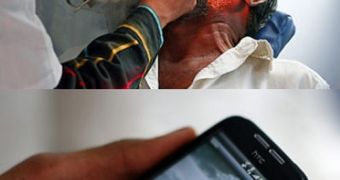A team of experts from the MIT, including students, volunteers, and professors, has recently developed a new method of providing healthcare to millions of people in the Third World, and in the developed world.
Their approach relies heavily on the 5 billion+ mobile-device subscribers that exist worldwide. A large part of that number is made up of people located in low- and middle-income countries.
According to official statistics compiled by the United Nations Foundation (UNF), it would appear that about 66 percent of all subscribers are located in these nations.
Scientists at the Massachusetts Institute of Technology (MIT) noticed this massive amount of subscriptions, and began wondering if this could be used to benefit the people in need directly.
The main problem affecting millions in the globe's poorest areas is the lack of access to clinics and other health centers. Oftentimes, these facilities are located hundreds of miles away.
The MIT group therefore developed a new type of mobile-device technology, called Sana, which has the ability to bring healthcare to the people who use smartphones running Google’s Android OS.
These people could use the method to get in touch with healthcare experts who are based at the nearest clinic or hospital, and then send data about their condition to the medical personnel.
The open-source software also allows people to send images of visible symptoms, for doctors' consideration. The experts could then prescribe relevant treatments, or provide useful advices.
One of the main advantages to this system is the fact that rapid responses could help those who are isolated and cannot get to clinics save lives.
“What makes Sana unique is that the solution development and implementation is a shared responsibility with local stakeholders, which ensures sustainability,” says World Health Organization (WHO) program manager Getachew Sahlu.
The work on SANA was carried out at the MIT Computer Science and Artificial Intelligence Laboratory (CSAIL), in the lab of expert Peter Szolovits.
He is a professor of computer science and engineering and of health science and technology at the Institute, and also the coordinator of the efforts.

 14 DAY TRIAL //
14 DAY TRIAL //